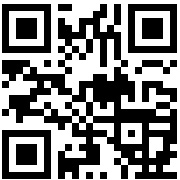
What are the automatic transmissions for automobiles, and what are the differences?
- Categories:Industry News
- Author:
- Source:
- Time:2021-08-10
- Visits:0
[Summary]Automobile gearboxes are mainly divided into: manual gearboxes and automatic gearboxes. Among them, the automatic transmission is divided into ordinary automatic transmission AT
What are the automatic transmissions for automobiles, and what are the differences?
[Summary]Automobile gearboxes are mainly divided into: manual gearboxes and automatic gearboxes. Among them, the automatic transmission is divided into ordinary automatic transmission AT
- Categories:Industry News
- Author:
- Source:
- Time:2021-08-10
- Visits:0
Information
Automobile gearboxes are mainly divided into: manual gearboxes and automatic gearboxes. Among them, the automatic transmission is divided into ordinary automatic transmission AT, AMT transmission, CVT continuously variable transmission/CVT transmission with simulated gear, DSG dual clutch transmission, electronic continuously variable transmission (E-CVT), Honda 8 Speed DCT:
Manual gearbox is also called manual gear, which means that you can change the gear meshing position in the gearbox and change the transmission ratio by turning the shift lever by hand, so as to achieve the purpose of shifting. The gear lever can only be moved when the clutch is stepped on. The manual transmission is the most traditional and the oldest type of transmission. If the driver is skilled, a car equipped with a manual transmission can accelerate and overtake faster than an automatic transmission and save fuel. Those who have passed the C1 exam should be very familiar with it.
Ordinary automatic gearbox is a transmission form commonly used in automatic transmission vehicles. Its abbreviation AT (Auto Transmission) has almost become synonymous with automatic transmission. The ordinary automatic gearbox is composed of a hydraulic torque converter, planetary gears and a hydraulic control system. The variable torque is achieved by means of hydraulic transmission and gear combination. Among them, the hydraulic torque converter is the most important part of AT. It is composed of pump wheels, turbines, guide wheels and other components, and has the functions of transmitting torque and clutching. Manual gears change gears mainly by adjusting different gear combinations, while automatic gearboxes achieve the purpose of shifting by means of hydraulic power transmission and gear combinations. Generally speaking, the gears of the automatic transmission are divided into P, R, N, D, 2, 1, or L.
AMT gearbox (that is, automatic manual gearbox) is a mechanism that is equipped with a set of electronically controlled hydraulic control system on the usual manual gearbox and clutch to achieve the purpose of automatically switching gears. In fact, a microcomputer-controlled automatic control system is added to the original manual transmission, that is, the geared mechanical transmission (MT), to change the original manual operating system.
Cars equipped with AMT no longer need a clutch pedal. The driver can start and drive the car simply by simply stepping on the accelerator pedal. Among the three new types of automatic transmissions, AMT gearboxes have relatively low technical difficulty, but there are problems that affect driving comfort such as interruption of gear shifting power. In China, AMT is currently only used in some A0-level models. Due to the small range of models involved and the relatively low-end vehicles, AMT lacks a platform for promotion, and its development prospects are the least optimistic among the three new types of automatic transmissions.
CVT, Continuous Variable Transmission, mechanical continuously variable transmission. CVT uses a transmission belt and a variable groove width ratchet for power transmission. That is, when the ratchet changes the groove width elbow, the contact radius of the driving wheel and the driving belt on the driven wheel is changed correspondingly to change speed. The transmission belt generally uses rubber belts, metal belts and metal chains. The CVT continuously variable transmission adopts the transmission belt and the variable working diameter of the main and driven wheels to transmit power. The drive train can be optimally matched to the engine operating conditions. The CVT mechanical continuously variable transmission is an automatic transmission mainly promoted by Japanese car companies, but the shortcomings of CVT are also obvious, that is, the transmission belt is easily damaged and cannot withstand large loads.
DSG dual-clutch gearbox, Volkswagen’s DSG dual-clutch gearbox is a new type of transmission with a subversive design. It not only inherits the high transmission efficiency of manual gearboxes, but also shifts faster than manual gearboxes. The biggest difference between the DSG dual-clutch gearbox and the traditional dual-clutch gearbox is that it has a dual clutch device composed of two sets of clutch plates, and a dual drive shaft mechanism composed of a solid shaft and an external sleeve. , And the Mechatronic electronic control and hydraulic device control the actions of the two sets of clutches and gear sets at the same time. Currently, models equipped with dual-clutch gearboxes are rare. Volkswagen Magotan, Golf GTI and New Passat are equipped with dual- Clutch gearbox.
Electronic Continuously Variable Transmission (E-CVT): It is the technical core of Toyota's Hybrid Technology (THS) and GM's Hybrid Technology (Voltec II). Among them, Toyota's THS was born the earliest (1997) and is the most famous. Although there is "CVT" in the name, it is actually completely different from the general CVT (Mechanical Continuously Variable Transmission). Because it is the core part of the hybrid system, it will be briefly introduced along with the entire hybrid system. Take Toyota THS as an example. Its structure uses a planetary gear set to connect two motors to the engine crankshaft. The large motor is directly connected to the wheels, and the engine speed is adjusted by the forward or reverse rotation of another motor. , There is no need to use clutches, hydraulic transmission, etc. to interrupt the link between the engine crankshaft and the gear set. The principle is to adjust the speed of the motor to keep the engine working in a working condition with relatively high thermal efficiency (it can also turn the engine into a state of fuel cut and reverse drag or stop the engine directly); on the other hand, it can realize kinetic energy recovery through the motor, etc. Method (the battery pack acts as a power reservoir) to achieve low energy consumption of the entire vehicle. [GM's Voltec II is a bit more complicated, using dual planetary gear sets (bypassing Toyota's patent restrictions) and adding a clutch (for extreme fuel economy under individual working conditions), but the principle is the same as THS. 】Advantages: The transmission efficiency of the whole system is high, and the energy utilization rate is also very high (very fuel-efficient), because the work of the engine does not directly contact the wheels, so the responsiveness and smoothness of the whole system is extremely high. Disadvantages: In terms of principle and structure, if the motor fails, the entire power system will be paralyzed, which is not suitable for harsh environments that require reliability. (But Toyota has done a good job in the reliability of THS. Since its birth in 1997, I haven't heard of any large-scale problem outbreak. GM's Voltec II has just come out. It's hard to say)
Honda DCT: Honda added a hydraulic torque converter between the engine and the DCT gearbox. The power first passes through the hydraulic torque converter and then enters the dual clutch. Advantages: At any time, you can change gears faster and have a relatively smooth driving experience (compared to ordinary DCT, a torque converter can absorb speed difference and vibration), avoiding the problem of clutch overheating in some cases of dual-clutch . Disadvantages: high cost (the expensive AT is the hydraulic torque converter)
Scan the QR code to read on your phone
Relevant news
Previous page
1
2
…
4
Next page
CONTACT US
SCAN QR CODE

EWM
MESSAGE
客戶留言
Description:
© 2021 Chongqing Winstar Precise Machinery Co.,Ltd. Inc. All Rights Reserved. 京ICP證000000号 Powered by www.300.cn SEO

